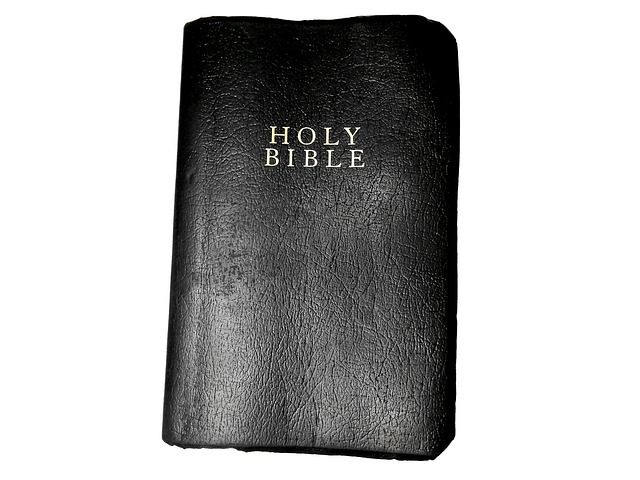If you’ve ever found yourself scratching your head over the correct way to refer to book titles in your writing, you’re certainly not alone. From italicizing to placing quotation marks, navigating the rules can be as confusing as getting lost in a labyrinthine library. But fear not, dear reader, for we are here to shed light on the best approaches for referring to book titles in your writing. Whether you’re a seasoned wordsmith or just beginning your literary journey, join us as we unravel this captivating guide to ensure your book titles are perfectly punctuated and confidently conveyed.
Contents
- Different Approaches to Referring to Book Titles in Writing
- Using Italics and Quotation Marks: When to Choose Each Option
- Guidelines for Capitalization in Book Titles: Navigating the Rules
- Capitalization Guidelines for Book Titles: Navigating the Rules
- Punctuation Rules for Book Titles in Writing: Names, Colons, and More
- Importance of Consistency in Referring to Book Titles: Avoiding Confusion
- Styling Book Titles in Academic Writing: MLA, APA, and Chicago Styles
- Referencing Book Titles in Digital Content: Hyperlinks and Accessibility Considerations
- Frequently Asked Questions
- Concluding Remarks
Different Approaches to Referring to Book Titles in Writing
When it comes to referring to book titles in writing, there are several different approaches you can take. It’s important to use the appropriate format for each style you choose, as this enhances the readability and professionalism of your writing. Here are some of the most common strategies:
1. Italics: One popular approach is to italicize book titles. This is commonly seen in academic writing, newspaper articles, and magazine features. By using italics, you can clearly distinguish the title from the rest of the text and give it a prominent visual presence. For example, *The Great Gatsby* by F. Scott Fitzgerald is an exemplary portrayal of the Roaring Twenties.
2. Quotation marks: Another method is to enclose book titles in quotation marks. This style is often employed in informal writing, such as blog posts, social media updates, and personal letters. Quotation marks draw attention to the title and indicate that it’s a distinct entity within the text. For instance, “To Kill a Mockingbird” by Harper Lee explores the theme of racial injustice in a small Southern town during the 1930s.
By choosing the most suitable approach, whether it’s italics or quotation marks, you can effectively refer to book titles in your writing and convey the intended message to your readers. It’s important to remain consistent with the chosen style throughout your work to maintain clarity and professionalism.
Using Italics and Quotation Marks: When to Choose Each Option
When it comes to emphasizing words or phrases, writers often face a dilemma: should they use italics or quotation marks? Both options play a crucial role in enhancing the clarity and impact of your writing, but understanding when to use each can make a significant difference in conveying your message effectively. Let’s delve into the instances where you should choose italics or quotation marks, and how they can add value to your written work:
Italics are primarily used to provide emphasis or highlight key terms. By slanting the text slightly, italics can grab the reader’s attention and help convey the intended meaning with added weight. Here are a few scenarios where italics should be your go-to choice:
– When introducing a new or technical term that may be unfamiliar to readers: For example, “The **medial collateral ligament** stabilizes the knee joint.” By italicizing the term, you immediately draw attention to its significance.
– When referencing titles of larger bodies of work, such as books, films, or television shows: For instance, “I just finished reading **The Great Gatsby**, and it was an enchanting experience.” By italicizing the title, you signal to the reader that it is a distinct work deserving special attention.
– When emphasizing words within a sentence: For instance, “The sun was **blinding** as it reflected off the water.” By italicizing the word “blinding,” you create a visual impact, making it stand out among the other words in the sentence.
On the other hand, quotation marks serve a different purpose – they are typically used to enclose direct quotes, dialogues, or shorter works. Here are a few instances where quotation marks can be your preferred choice:
– When quoting someone directly: For example, “As Albert Einstein famously said, ‘Imagination is more important than knowledge.'” By using quotation marks, you indicate that those words are exactly what Einstein said.
– When denoting dialogues in narratives or plays: For instance, “He turned to his friend and said, ‘I cannot believe it’s already late.'” By enclosing the dialogue in quotation marks, you create a clear distinction between the characters’ spoken words and the narrative text.
– When discussing specific words or phrases: For example, “The word ‘surreal’ perfectly describes the experience of walking through an art museum.” By using quotation marks, you give extra emphasis to the word “surreal,” emphasizing its significance to the sentence.
By understanding the appropriate usage of italics and quotation marks, you can enhance the clarity, emphasis, and overall impact of your writing. Remember to use italics for highlighting terms or titles and quotation marks for direct quotes or shorter works. Mastering these punctuation tools will undoubtedly elevate the quality of your written communication.
When it comes to book titles, determining which words should be capitalized can sometimes feel like trying to solve a complicated puzzle. To assist you in this linguistic labyrinth, we’ve compiled a set of guidelines to help you navigate the tricky rules of capitalization. These guidelines will ensure that your book title garners attention and represents your work in the most professional and accurate manner.
To begin with, it’s important to remember that the capitalization rules for book titles primarily depend on the specific style guide you follow, such as the Chicago Manual of Style or the Modern Language Association (MLA) Handbook. However, there are a few general principles that can serve as a solid starting point:
- Always capitalize the first and last words: Regardless of the style guide you adhere to, the first and last words of your book title should always begin with a capital letter. This rule helps distinguish the title from normal sentence structure and emphasizes its significance.
- Capitalize all major words: The next step is to capitalize all major words in your book title, such as nouns, verbs, adjectives, adverbs, and subordinating conjunctions. Minor words like articles (e.g., “the,” “a”) and prepositions (e.g., “in,” “of”) are typically not capitalized, unless they are the first or last word of the title.
- Italicize or use quotation marks: Alongside capitalization, you may also need to incorporate formatting elements into your book title. In general, italics are used for book titles when writing them within the text, while quotation marks are employed in citations or references.
By keeping these guidelines in mind while crafting your book title, you will be better equipped to overcome the challenges of capitalization. Remember, ensuring the accurate capitalization of your title not only reflects your attention to detail but also helps captivate potential readers, making your book stand out on the shelves and in the digital realm.
Punctuation Rules for Book Titles in Writing: Names, Colons, and More
When it comes to punctuating book titles, a few simple rules can help you navigate the sometimes confusing waters of grammar. Understanding how to correctly punctuate the names of books can enhance the professionalism and clarity of your writing. Here are some key guidelines to keep in mind:
- Italicize or underline: In both formal and informal writing, book titles should be italicized or underlined to distinguish them from the surrounding text. This helps to make them stand out and ensures consistency throughout your writing.
- Use colons for subtitles: If a book has a subtitle, separate it from the main title with a colon. This helps to provide additional context or information about the book. For example, “The Art of Storytelling: Crafting Compelling Narratives.”
- Omit punctuation within titles: In most cases, avoid using punctuation marks like commas or periods within book titles. Exceptions include when the punctuation is part of the original title, such as in “Alice’s Adventures in Wonderland,” where the apostrophe is necessary.
By following these punctuation rules, you can ensure your book titles are correctly formatted and easily understood by your readers. Proper punctuation not only adds professionalism to your writing but also helps to convey your ideas effectively. Remember to italicize or underline titles, use colons for subtitles, and be mindful of punctuation within titles. With these guidelines in mind, you’ll be well on your way to mastering the art of punctuating book titles!
Importance of Consistency in Referring to Book Titles: Avoiding Confusion
Consistency plays a crucial role when it comes to referring to book titles. By maintaining a consistent approach, we can avoid various forms of confusion and ensure clarity in our discussions and writings. Here are a few compelling reasons why consistency is of utmost importance:
- Eliminates ambiguity: Consistently referring to book titles in the same manner helps eliminate any ambiguity or uncertainty. A reader should be able to understand exactly which book is being discussed, without any confusion arising from inconsistent referencing.
- Enhances professionalism: Consistency in book title referencing demonstrates a level of professionalism and attention to detail in your work. It shows that you value accuracy and precision, making your writing more credible and reliable.
- Facilitates effective communication: When everyone involved in a discussion or project adheres to a consistent approach in referring to book titles, it becomes much easier to communicate and exchange ideas. This consistency allows for a smoother flow of information and better understanding among team members.
Remember, maintaining consistency in the format, capitalization, and punctuation of book titles is a small yet impactful way to ensure that your message is conveyed in the clearest possible manner. By prioritizing consistency, you can avoid any unnecessary confusion, enhance the quality of your work, and facilitate effective communication with your audience.
Styling Book Titles in Academic Writing: MLA, APA, and Chicago Styles
In academic writing, the styling of book titles is crucial as it helps convey essential information about the sources used. In this post section, we will explore the specific formatting guidelines for book titles in three prominent academic writing styles: MLA, APA, and Chicago. Each style follows a unique set of rules, so understanding how to properly style book titles is essential to maintain consistency and accuracy in your research.
MLA (Modern Language Association) style emphasizes the use of italics when citing book titles. According to MLA guidelines, the book title should be italicized in both in-text citations and the Works Cited page. However, if you are unable to format the text in italics, you may use quotation marks instead. It is important to note that smaller works, such as articles or essays, should be enclosed in quotation marks within the larger work.
On the other hand, APA (American Psychological Association) style takes a slightly different approach when styling book titles. In APA, book titles are only italicized in the reference list, both for in-text citations and the full bibliographic entry. Additionally, APA does not use quotation marks for book titles, except for titles of chapters or sections within a book. In this case, the chapter or section title should be written in sentence case and enclosed in quotation marks. Remember to consult a style guide or APA manual for further details and exceptions.
Moving on to Chicago style, it offers two different formatting options for book titles: italics or underlining. Both in-text citations and the bibliography follow the same formatting rules. Either italicizing the book title or underlining it is acceptable, but you should choose one method and consistently follow it throughout your entire paper. Keep in mind that Chicago style does not use quotation marks for book titles unless they are part of a larger work or mentioned within the text.
While understanding how to style book titles in academic writing may seem like a small detail, it is crucial to adhere to the guidelines provided by your chosen style. Consistent formatting enhances the professionalism and credibility of your work, avoiding confusion and ensuring proper citation recognition. Remember to consult the appropriate style guide or manual for detailed instructions and exceptions to these general guidelines.
Referencing Book Titles in Digital Content: Hyperlinks and Accessibility Considerations
In the digital age, referencing book titles in online content has become a vital aspect of creating informative and engaging material. Hyperlinks provide a convenient way to direct readers to the books being referenced, allowing them to easily access further information or make a purchase. However, it is crucial to consider accessibility when incorporating hyperlinks to ensure everyone has equal opportunities to explore the suggested books.
When referencing book titles in digital content, using hyperlinks provides a seamless user experience. By embedding clickable links within the text, readers can effortlessly navigate to external sources such as online bookstores or websites offering more details about the referenced book. Hyperlinks can be created using HTML code, for example, Book Title, where the URL within the href attribute points to the specific webpage related to the book. This straightforward approach keeps the flow of the content intact while enhancing its functionality.
While hyperlinks are a powerful tool, considerations for accessibility should not be overlooked. Ensuring that all individuals, including those with disabilities, can access and benefit from the content is paramount. Here are some key accessibility considerations when referencing book titles in digital content:
– Use clear and descriptive link text: Instead of using generic phrases like “click here,” opt for link text that accurately represents the book title. This enables individuals who rely on screen readers or other assistive technologies to understand the context of the link.
– Provide alternative text for images: If book covers or related images are used as hyperlinks, include descriptive alt text that conveys the purpose of the image. This allows visually impaired individuals to comprehend the content even without seeing the images.
– Test for keyboard accessibility: Ensure that all links can be accessed and activated using a keyboard alone. Some individuals may navigate the web solely through keyboard input, requiring the ability to interact with hyperlinks without relying on a mouse.
By incorporating hyperlinks into digital content and considering accessibility, referencing book titles becomes an interactive experience that enriches readers’ engagement while providing equal access for all.
Frequently Asked Questions
Q: What is the correct way to refer to book titles in writing?
A: When writing about book titles, it is important to follow certain guidelines to ensure accurate and consistent formatting. The general rule is to italicize the titles of standalone books and use quotation marks for shorter works, such as poems or chapters.
Q: Can you provide examples of standalone books?
A: Certainly! Standalone books include novels, non-fiction books, anthologies, and reference books. For instance, “To Kill a Mockingbird,” “1984,” “Pride and Prejudice,” and “Moby-Dick” are all examples of standalone book titles that should be italicized when referenced in writing.
Q: How about shorter works? How should their titles be referred to?
A: Titles of shorter works, like poems, short stories, essays, or chapters, should be placed within quotation marks. Examples of these include “The Road Not Taken” (poem), “The Tell-Tale Heart” (short story), “Self-Reliance” (essay), or “Chapter 2: The Experiment” (chapter within a book).
Q: Are there any exceptions to these rules?
A: Yes, there are a few exceptions. The first exception is when using italics or quotation marks would be impractical, such as in handwritten notes or when using a typewriter. In these cases, underlining can be used instead of italics, and quotation marks are still appropriate for shorter works.
Q: What if a book title is part of a larger work, like a series?
A: If you are referring to a specific title within a larger work or series, such as a book in the Harry Potter series or a novel in a trilogy, it is important to italicize or underline the title of the book, while placing the overall series title in quotation marks. For example, “Harry Potter and the Philosopher’s Stone” (book title) is part of the “Harry Potter” (series title) series.
Q: Should subtitles be italicized or placed in quotation marks?
A: Subtitles should follow the same formatting as the main title. If the main title is in italics, the subtitle should also be in italics. If the main title is in quotation marks, the subtitle should follow suit.
Q: What about referencing book titles in academic papers or formal writing?
A: In formal writing, including academic papers or published works, it is best to follow the guidelines set by the specific style guide being used, such as APA, MLA, or Chicago. These style guides provide detailed instructions on how to format and cite book titles among other elements in written works.
Q: Are there any common mistakes to avoid when referring to book titles?
A: One common mistake is forgetting to use italics or quotation marks altogether. Titles should not be written in plain text without any formatting. Additionally, avoid capitalizing every word in a title, unless they are proper nouns or adjectives. It’s important to maintain consistency in formatting when referring to book titles in writing.
Q: Is there any additional advice you can provide on this topic?
A: Yes, it’s always best to consult the style guide relevant to your writing or publication to ensure accurate and consistent formatting. Remember, correctly formatted book titles not only enhance the overall professionalism of your writing but also demonstrate your attention to detail.
Concluding Remarks
Overall, there are various approaches to referring to book titles in writing. Whether using italics, quotation marks, or underlining, consistency is key for clear and effective communication.







